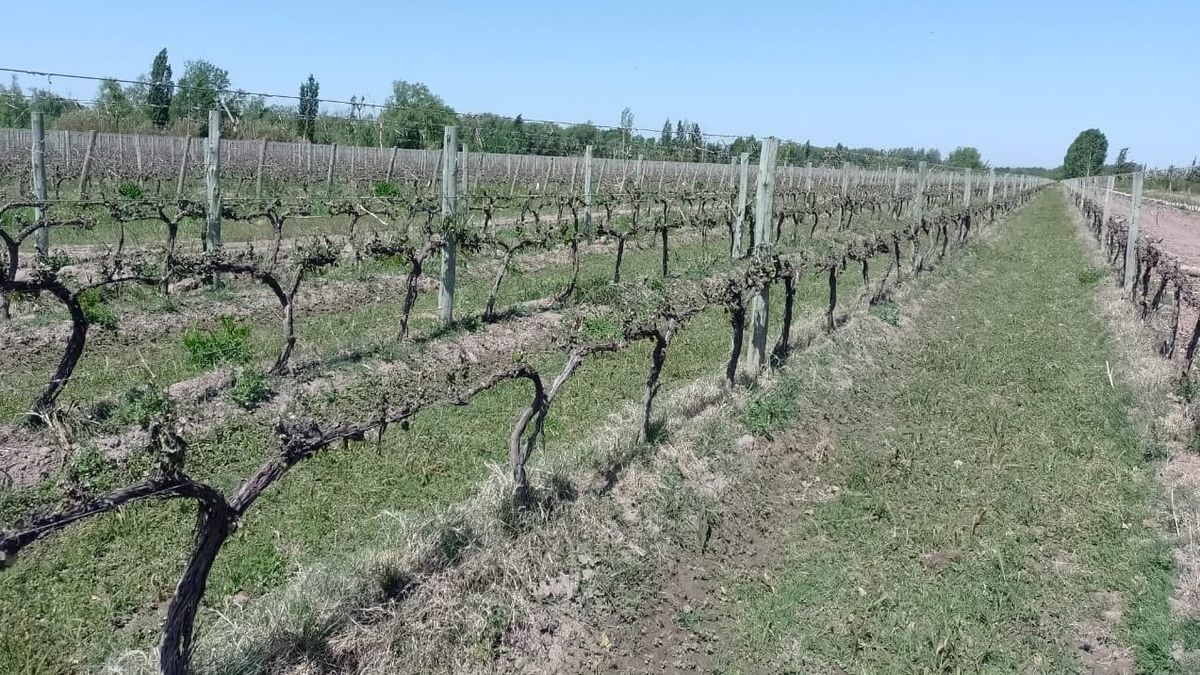The state of emergency covers 135 districts located in 15 of the 18 departments of the province: San Carlos, Tunuyán, Tupungato, Junín, La Paz, Rivadavia, San Martín, Santa Rosa, Guaymallén, Las Heras, Lavalle, Luján de Cuyo, Maipú, General Alvear and San Rafael.
Previously, at the beginning of November, the Mendoza government declared a provincial state of emergency through Provincial Decree 1975, and provided that those who have an affectation of 50% to 79% of their production will enter the category of agricultural emergency; while those who have suffered damage between 80% and 100% will be included under the item agricultural disaster.
The frosts affected approximately 10,000 hectares of vineyards and another 10,000 of fruit treesas indicated at that time by Sergio Moralejo, Provincial Undersecretary of Agriculture and Livestock.
“All the areas have had significant damage and in the Uco Valley it mainly affected peach, but also vineyards. In the eastern area, which concentrates 50% of the viticulture, the frost has fundamentally affected that, and in the southern area, there is viticulture, plum and peach and it has been strongly affected, so it has really been a magnitude of damage,” the official said.
Wheat season complicated by frost in the core area
Mendoza presented the provincial decree to the National Commission for Agricultural Emergencies and Disasters which, after analyzing the situation, recommended declaring a state of emergency by the Nation.
Support to producers
Today’s provision indicated that, in order to receive the benefits, the affected producers must present a certificate issued by the competent authority of the province, stating that their properties or exploitations are included in the foreseen cases.
The provincial government will send the list of affected producers to the Executive Technical Secretariat of the National Commission for Agricultural Emergencies and Disasters, along with a copy of the emergency certificate issued by the competent provincial authority.
For his part, the national, official or mixed banking institutions and the Federal Administration of Public Revenues (AFIP), will arbitrate the necessary means so that the agricultural producers included in the resolution enjoy the benefits provided.
In this sense, at the end of last December, the Ministry of Agriculture, Livestock and Fisheries and the Federal Administration of Public Revenues (AFIP) simplified access to the agricultural emergency system, through the Fiscal Code service called “Digital Presentations” and the digital form “Emergency Zone”.
Assistance for emergency areas includes, on the one hand, the extension of the due date for the payment of taxes on the assets, capital or profits of the affected farms until the year following the end of the emergency.
Likewise, it contemplates the suspension of the initiation of tax execution trials for the collection of taxes owed; and if it was already started, it must be stopped until the emergency expires.
Also, the deduction in the tax balance of the Income Tax of 100% of the profits derived from the forced sales of cattle, sheep, goats or pigs is foreseen.
Source: Ambito
David William is a talented author who has made a name for himself in the world of writing. He is a professional author who writes on a wide range of topics, from general interest to opinion news. David is currently working as a writer at 24 hours worlds where he brings his unique perspective and in-depth research to his articles, making them both informative and engaging.




